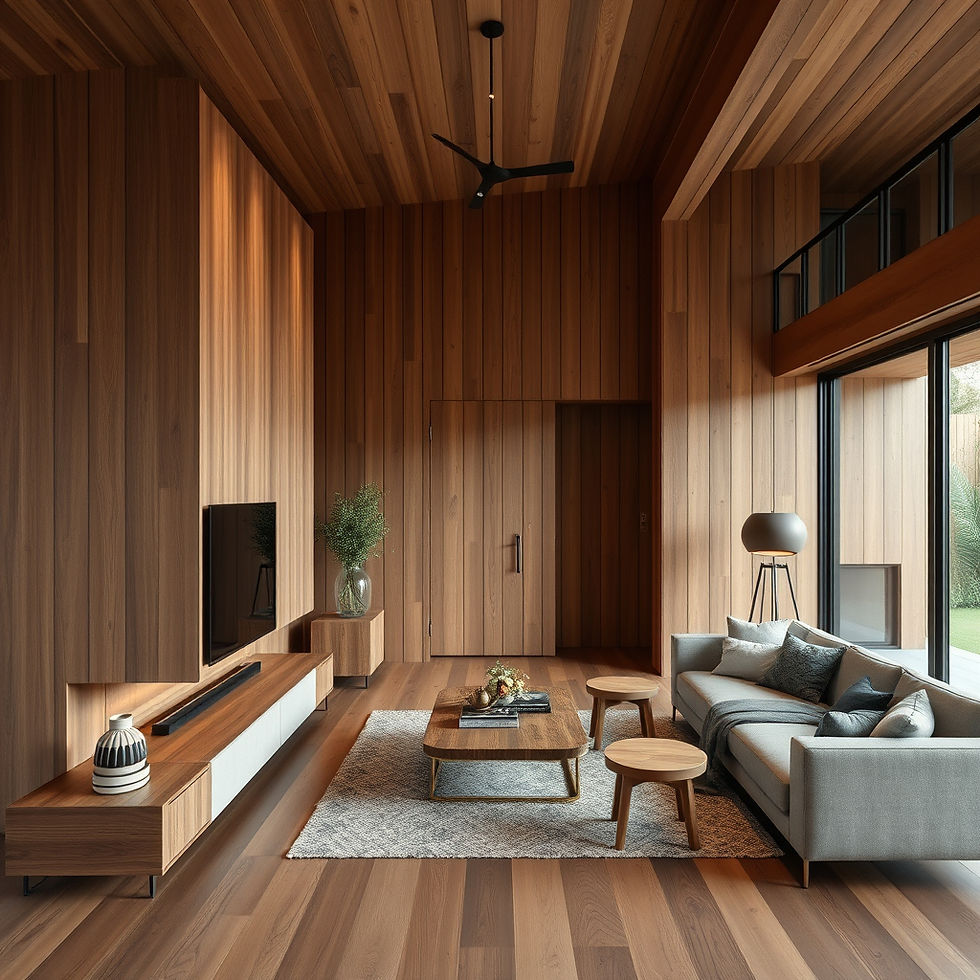The Language of Timber: What Words Like ‘Quarter-Sawn’ and ‘Live Edge’ Actually Mean
- sales61423
- Jul 17
- 3 min read
Whether you're a weekend DIYer, an architect specifying finishes, or a joiner placing an order, the world of timber comes with a rich — and sometimes confusing — vocabulary. Terms like quarter-sawn, live edge, finger-jointed or mitre pop up all the time. But what do they actually mean?
This glossary-style guide breaks down the most common (and misunderstood) timber terms, with clear definitions and visual explanations — so you can speak timber like a pro.
📚 Timber Glossary: Key Terms Explained
1. Quarter-Sawn
Definition: A method of cutting a log at a right angle to the growth rings, producing boards with straight, uniform grain.
Why it matters: Quarter-sawn timber is more stable and less prone to warping, cupping or twisting. It also produces beautiful grain patterns, especially in oak.
Use it when: You want high stability and elegant grain — ideal for flooring, cabinetry, and joinery.
2. Live Edge
Definition: A board where at least one edge retains the natural, uncut contour of the tree.
Why it matters: Adds organic, characterful shape to furniture and shelving — a favourite in modern rustic or biophilic design.
Use it when: You want to highlight nature’s shape and texture, often seen in tables, benches, and wall panels.
3. Finger-Jointed
Definition: A manufacturing technique where short pieces of timber are joined end-to-end using interlocking ‘fingers’ and strong adhesive.
Why it matters: Finger-jointed timber is more sustainable (using offcuts), reduces waste, and provides strong, straight, consistent boards with minimal movement.
Use it when: You need long, stable lengths for furniture, mouldings, or painted cabinetry — especially when grain continuity is less critical.

4. Mitre (or Miter)
Definition: A precisely angled cut, usually at 45°, that allows two pieces of timber to join neatly at a corner.
Why it matters: Common in picture frames, trim, and cabinetry, mitres provide a clean, continuous look with no exposed end grain.
Use it when: Building furniture, frames, architraves, or decorative box corners — anywhere a tidy corner join is needed.
5. Kiln-Dried
Definition: Timber that’s been dried in a controlled environment to remove moisture.
Why it matters: Kiln-dried boards are stable, less prone to warping, and ready for interior use.
All our panels at Proboard Timber are kiln-dried to 8%.
6. Rough Sawn
Definition: Timber cut but not planed smooth — often straight from the mill.
Why it matters: It’s cost-effective and ideal for further machining or rustic aesthetics.
7. Dressed (DAR – Dressed All Round)
Definition: Timber machined smooth and square on all sides.
Why it matters: Ready for joinery and installation for various jobs with no further planing needed.
8. Heartwood vs Sapwood
Heartwood is the dense inner core — darker and more durable.
Sapwood is the lighter, softer outer layer.
Why it matters: Heartwood is typically more resistant to decay and often chosen for structural or outdoor uses.

9. Checking
Definition: Small surface cracks caused by timber drying unevenly, usually at the ends.
Why it matters: Usually cosmetic, but something to account for in final cuts or finishing.
10. Movement
Definition: Wood naturally expands and contracts with moisture and temperature changes.
Why it matters: Design with this in mind to avoid gaps, cracks, or warping over time.
11. Grain Direction
Definition: The orientation of wood fibres — can be straight, wavy, or irregular.
Why it matters: Grain affects strength, appearance, and how a board reacts to cutting or finishing.

12. Lamination
Definition: Bonding lamellas of timber together to form a thicker or wider board.
Why it matters: Increases stability, allows longer spans, and can improve aesthetics.
Final Thoughts: Why Timber Terms Matter
Understanding timber terminology helps you:
Order with confidence
Choose the right product for the right job
Spot quality craftsmanship
Avoid costly mistakes
From joinery to cladding, timber is an expressive, living material — and knowing the language helps you get the most out of every board.
🔗 Ready to put your knowledge to work? Explore our premium timber range, or talk to our team for expert advice at proboardtimber.com.





Comments